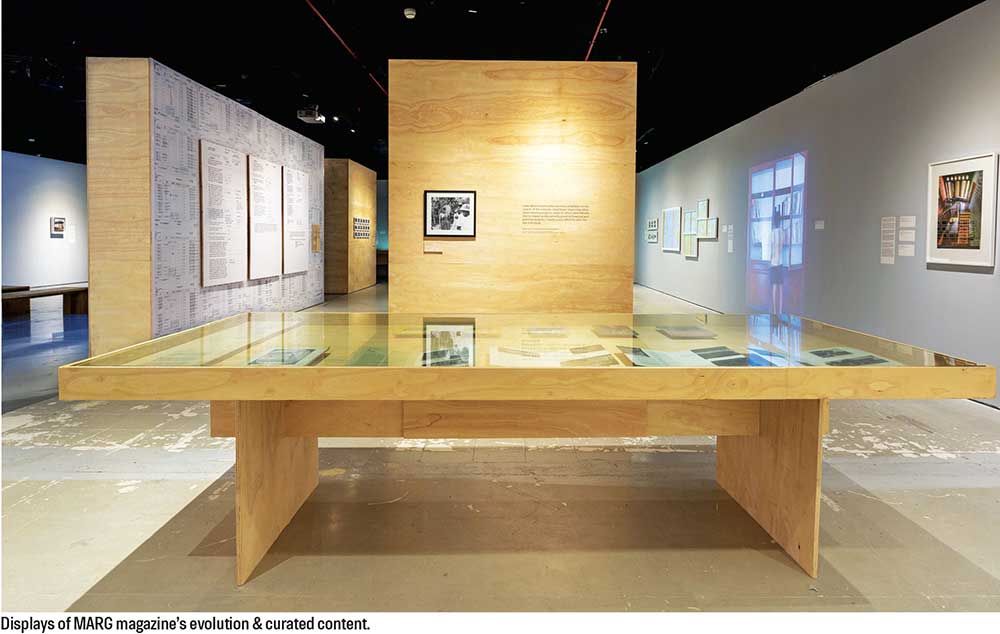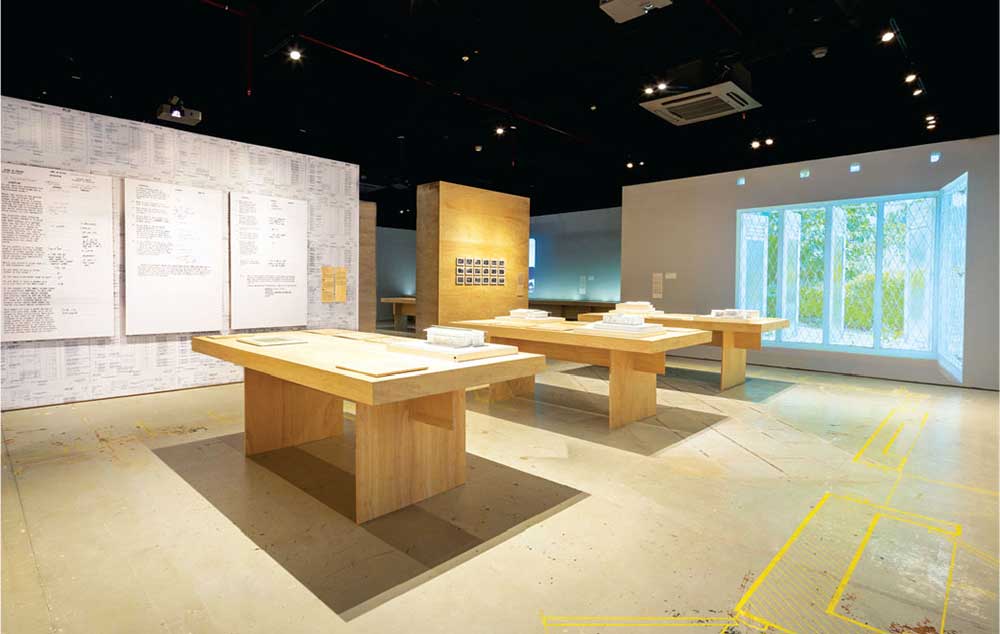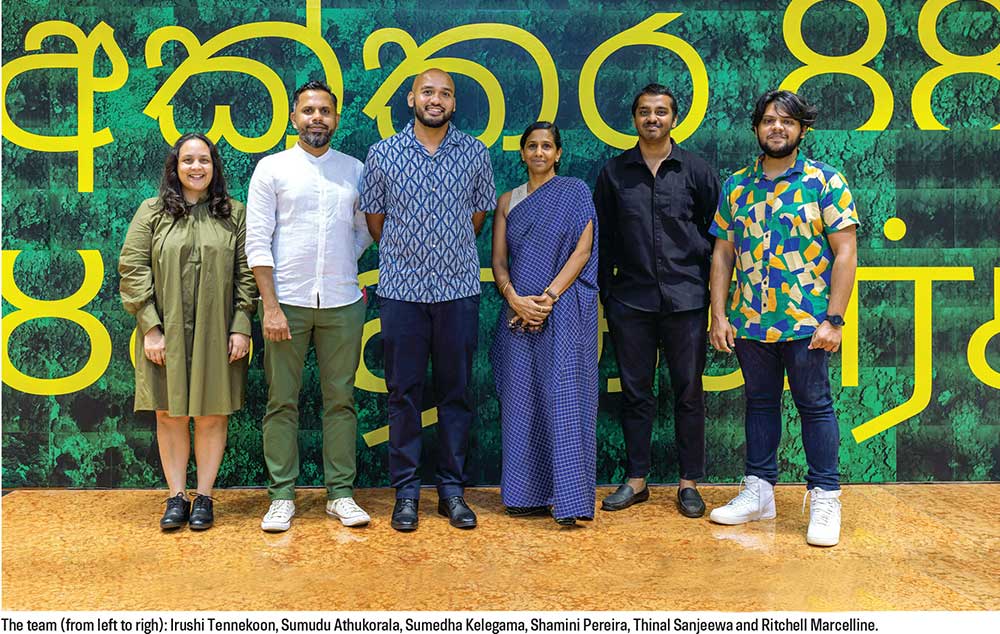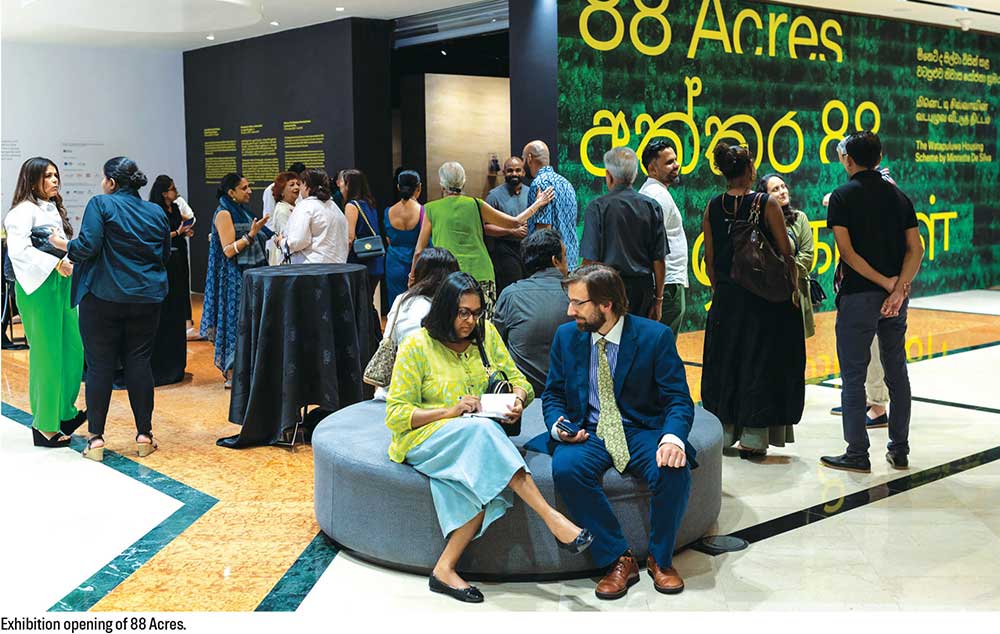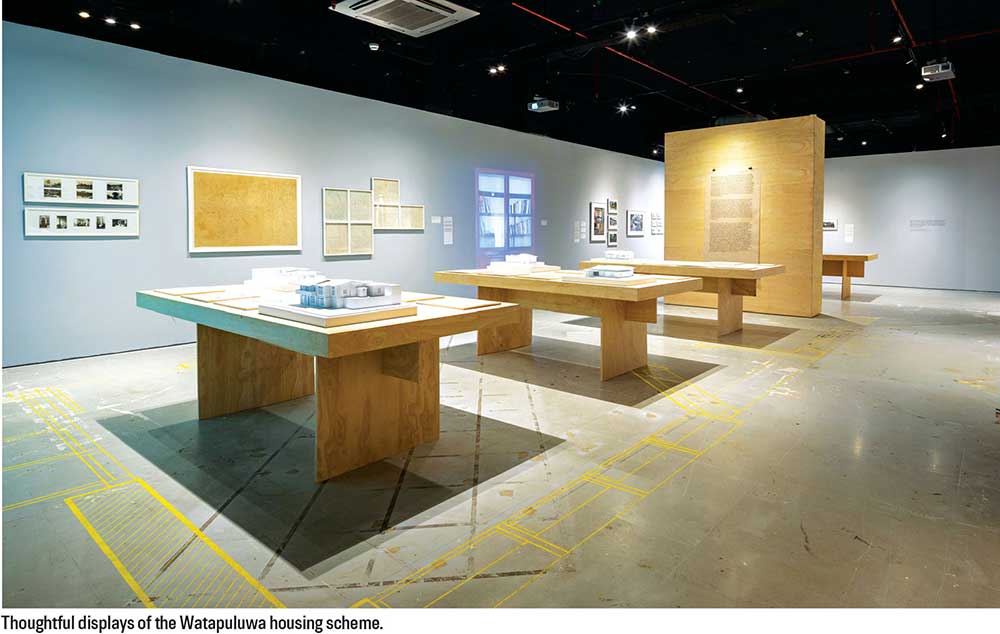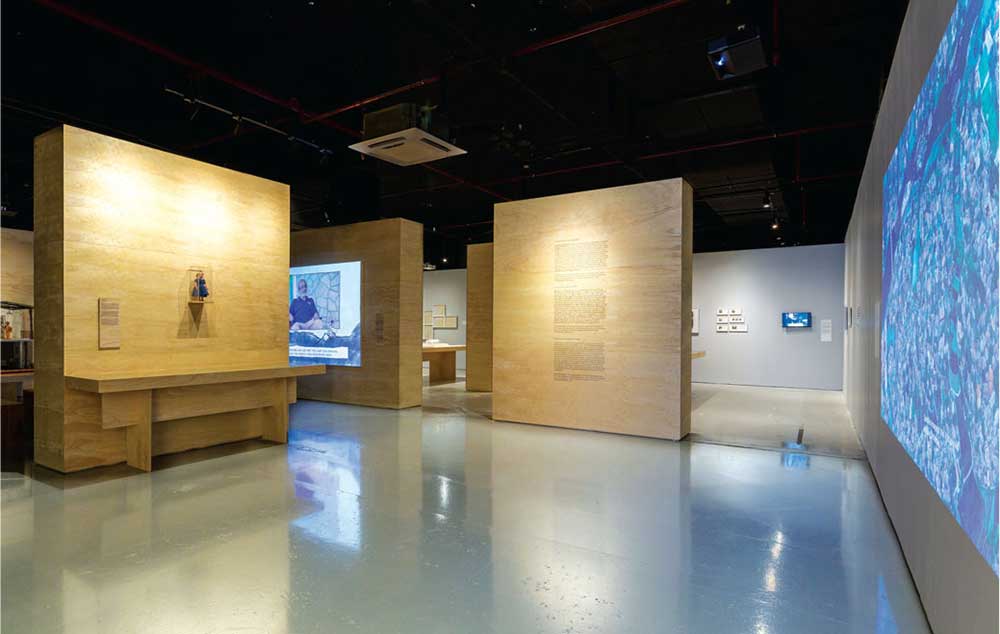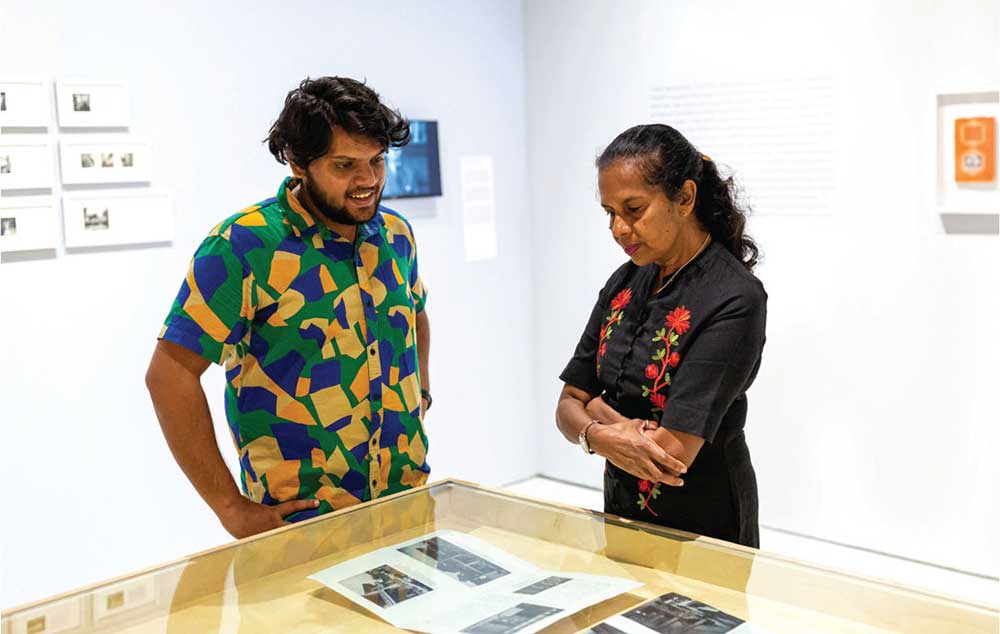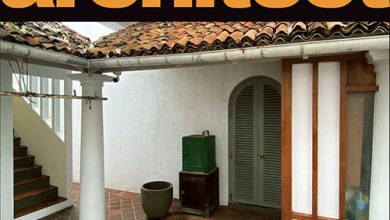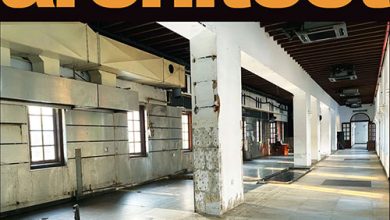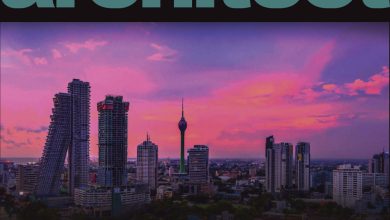FEATURE
CURATING 88 ACRES
THE WATAPULUWA HOUSING SCHEME by MINNETTE DE SILVA
BY Sharmini Pereira | Chief Curator | Museum of Modern and Contemporary Art, Sri Lanka

Since its inception, the Museum of Modern and Contemporary Art Sri Lanka (MMCA, Sri Lanka) has placed curatorial emphasis on single artworks, inviting audiences to become familiar with specific works by name, date, content and style. Such an approach favours close reading, which is aimed at deepening the ways we look at and interpret art; making sense of the history of art rather than the history of artists. ‘88 Acres: The Watapuluwa Housing Scheme by Minnette de Silva’ is hence an exhibition about one project by de Silva, rather than an overview of her entire practice. By considering the miniscule, the ground is set to contemplate the magnum opus. The latter requires the former, if knowledge creation at an epistemological level is to be attained.
Curating ‘88 Acres: The Watapuluwa Housing Scheme by Minnette de Silva’ began with the knowledge that no original drawings or models of the architect’s work existed. Together with being our first solo exhibition, it was also to be our first architecture show1.
Needless to say, it felt fitting to dedicate our first solo exhibition to an architect that had never, in her lifetime nor thereafter, been the subject of a solo exhibition. Focussing on the legendary woman architect Minnette de Silva (1918-98) was an obvious choice. Yet like countless curators, writers and researchers before us, the task at hand was thwarted by the absence of artefacts. De Silva left behind little by way of original models, drawings or even photographs. The only document to survive following her passing on 24 November 1998, is a large format, hardbound book that she tirelessly worked on in the later years of her life. In the absence of an archive, her book ‘The Life and Work of an Asian Woman Architect’ Vol. 1 (1998) provides an abundance of information and images that stand in for the loss of primary artefacts. Thanks to the foresight and dedication of architect Ashley de Vos, the book was published several months after de Silva died.
In the book, de Silva begins her description of the Watapuluwa Housing Scheme stating: “This project is really an early example of ‘community architecture’.” (LIfe & Works, 207). She concludes her short write up about the scheme saying: “It’s such a pity that this experience of planning and building a rent purchase scheme never could be repeated. It was such a success and in today’s context, is more relevant than ever.” (LIfe & Works, 219). Researching this scheme in order to curate an exhibition, over 25 years after de Silva’s reflections, was a challenge and an opportunity. Of the many options available to us, we decided to share the research problem with three contemporary artists whose practices combine film making, animation, storytelling and architecture.
In 2021, we commissioned Irushi Tennekoon (born 1989), Sumedha Kelegama (born 1988) and Sumudu Athukorala (born 1980) to embark on a research project focussing on the Watapuluwa Housing Scheme in Kandy, designed by de Silva and opened in 1958. The scheme heralded a new form of social housing in Sri Lanka, and was notably created with the participation of its users. We asked them to explore how this sprawling hillside development was ahead of its time in providing affordable accommodation for a diverse ethno-religious community of government public servants in Sri Lanka. Their research investigation included looking back at the scheme 65 years later to consider de Silva’s influences and the challenges of her design approach.
The artists’ research process was informed and surrounded by several factors. Amongst these they drew off the investigative pathways pioneered by Forensic Architecture, a multidisciplinary research group based at Goldsmiths, UK. Heeding the assertion of Eyal Weizman, Founder of Forensic Architecture, that “architectural knowledge, architectural intelligence and architectural investigation [can be] be used to unpack other situations,” they began their research with the reckoning that built environments bear testimony to complex sociopolitical backdrops. Further looking at the scheme through witness testimonies, found footage and oral histories, they could attempt to piece together a story that ultimately prompts more questions than answers.
The artists’ research culminated in an experimental animation documentary titled ‘Is this an architectural documentary?’ (2023) – which in turn provided the research around which ‘88 Acres: The Watapuluwa Housing Scheme by Minnette de Silva’ was curated. The exhibition is thus indexed and inextricably linked to the artists’ film.

Within the exhibition schema, it rightfully sits at the centre of the exhibition, which was sensitively designed by Jonathan Edward using untreated locally sourced plywood – a nod to de Silva’s assertion to use local materials, and dispense with costly processes of plastering and painting. The film also provides much of the ‘original’ artworks that are displayed in ‘88 Acres: The Watapuluwa Housing Scheme by Minnette de Silva by way of maquettes, models, drawings and puppets, overcoming the initial challenge of not having an archive of original artworks to draw from.
Our hope is that this exhibition will be one of many more to come, not only about de Silva but other Sri Lankan architects as well. Whilst working with original artefacts is pivotal to any museum, we also hope that this exhibition will help demonstrate that original research is just as important, and that such research can intelligently and dynamically be conducted by contemporary artists living and working today.
Though the exhibition only looks at one project by de Silva, it does set into play the dialogical means by which the modern and contemporary can be seen alongside one another. Whilst de Silva’s indomitable legacy will certainly continue to inspire more writing and conversations, the experience of curating an exhibition on her work has enriched what we have come to understand by curating.
PHOTOGRAPHY
Museum of Modern and Contemporary Art Sri Lanka

